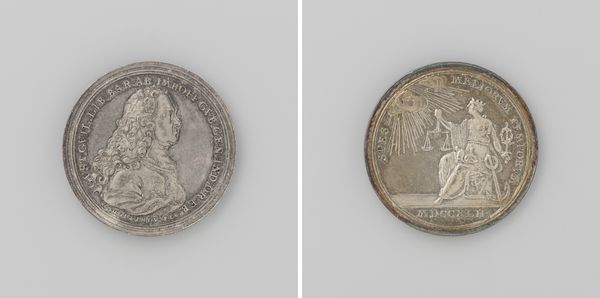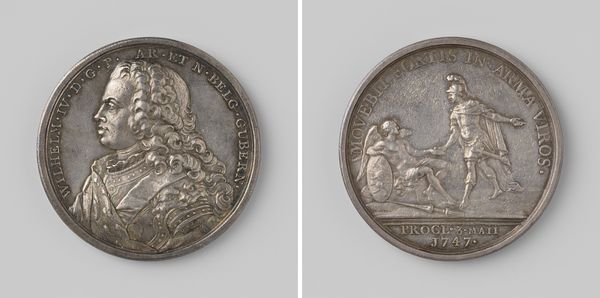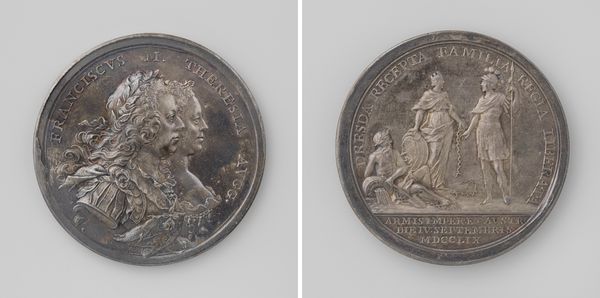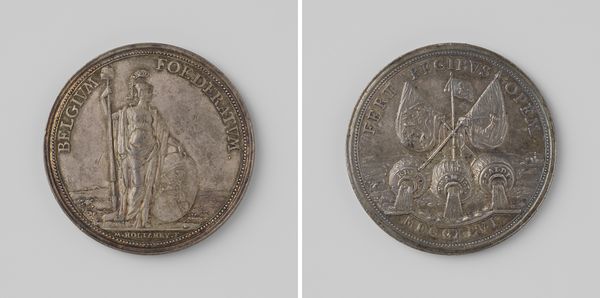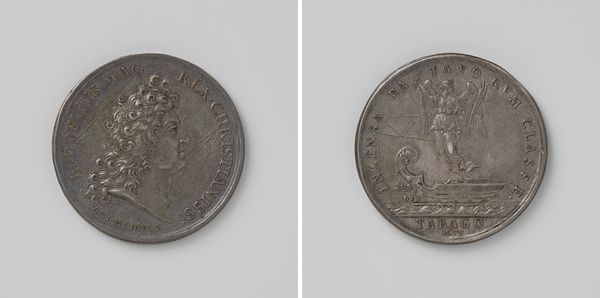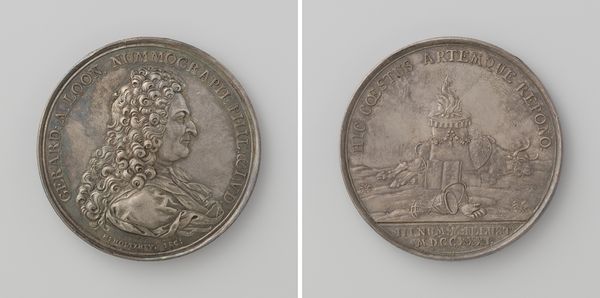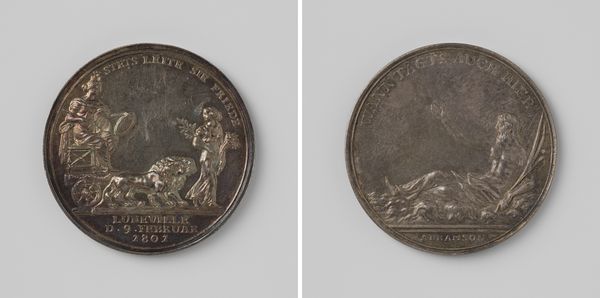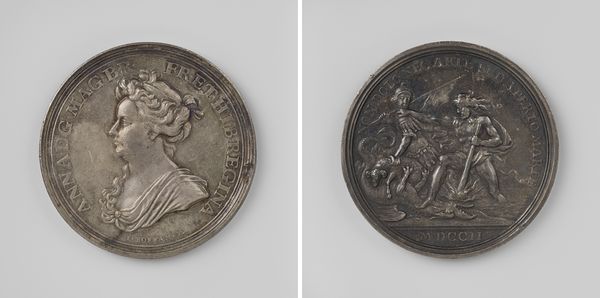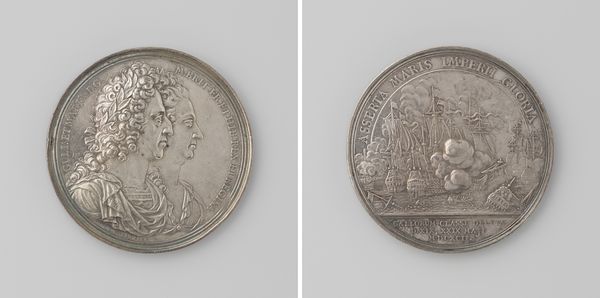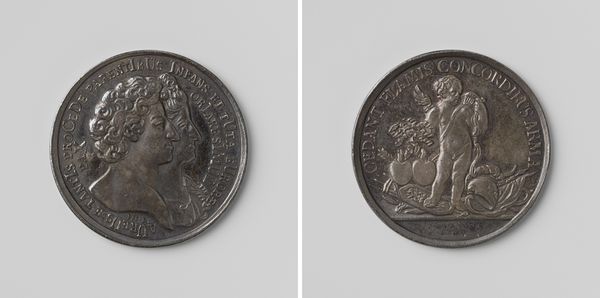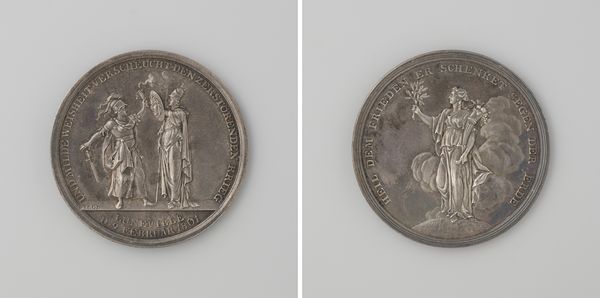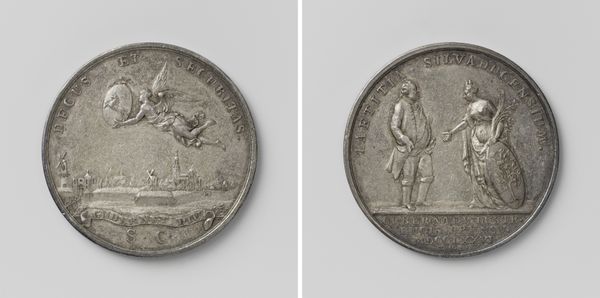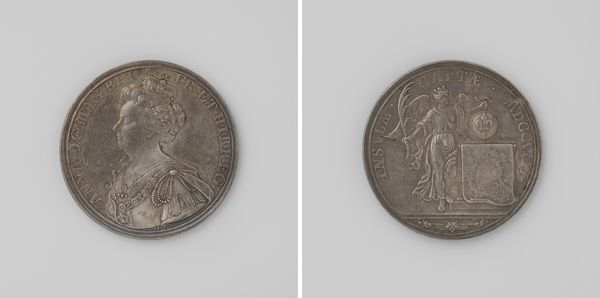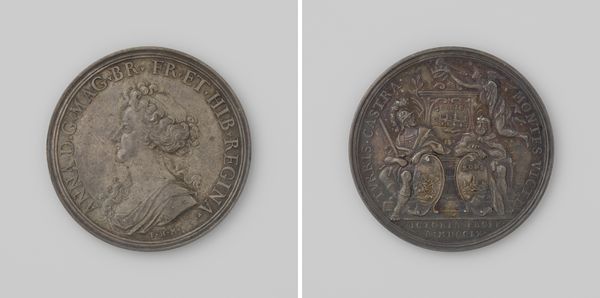
metal, relief, sculpture, engraving
#
portrait
#
neoclacissism
#
metal
#
sculpture
#
relief
#
classical-realism
#
sculptural image
#
sculpture
#
history-painting
#
engraving
#
miniature
Dimensions: diameter 3.4 cm, weight 14.74 gr
Copyright: Rijks Museum: Open Domain
Editor: This is a fascinating metal engraving from 1778 called "Instituut van E. Kempf aan de Kalverstraat te Amsterdam" by Martin Holtzhey. The classical-style figures give it a somewhat formal, allegorical feeling, like a scene from a history painting. What historical context might be informing this work? Curator: Well, given its neoclassical style and allegorical figures, it’s likely reflective of the Enlightenment ideals popular at the time. Remember, Neoclassicism often served as a visual language for expressing virtues and societal aspirations. Consider who this E. Kempf was and what his “Instituut” represented. Were they part of Amsterdam's burgeoning merchant class keen on projecting civic virtue and learning? Editor: I see. The text in the artwork also appears to have an intended significance. Do you think it ties into these ideals of virtue? Curator: Absolutely! Those inscriptions would have held great significance for the commissioners and viewers of the time. Think about the political and social function of these types of images. Were they intended to legitimize institutions, celebrate progress, or perhaps promote specific moral codes? This era was deeply concerned with public perception. This imagery was used to create very specific associations, and to present one's self in the best possible light. Editor: So, understanding the context of 18th-century Amsterdam, especially its economic and intellectual climate, is crucial for interpreting this piece. Curator: Precisely. The image's public role is key, reflecting the relationship between art, power, and social values. Look closely: what virtues do you observe are highlighted here and how are those images working to frame the person that the token/medallion was created for? Editor: Now I am more intrigued about the commissioning of art in the era and about Amsterdam society's values. Thanks for clarifying! Curator: And I have come to further consider how an engraver communicates in miniature and the socio-economic factors involved. Thanks to you, as well!
Comments
No comments
Be the first to comment and join the conversation on the ultimate creative platform.
